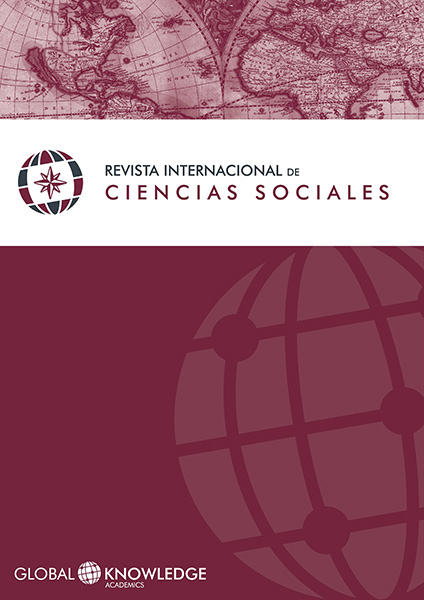Business Narrative as a Tool to Explore the Complexities of Management: the case of Satya Nadella
DOI:
https://doi.org/10.37467/gka-revsocial.v7.1994Keywords:
Business narrative, Storytelling, Study of cases, Leadership, Innovation, EmpathyAbstract
Business narrative, in the form of books or texts in other supports is a very powerful training tool. We refer to business people written experiences of the professional life, or proposals of management improvement based on real situations. Both are a training tool that is not used enough in the educational programs of Business Management, currently. Their knowledge and discussion in class, with diverse approaches, from the presentation prepared by students, to the discussion based on the case methodology, represents a qualitative leap in business people education. Particularly for a future economy that is more inclusive, efficient and generates higher levels of Social Welfare.
Downloads
Global Statistics ℹ️
|
656
Views
|
634
Downloads
|
|
1290
Total
|
|
References
Blanchot, M. (1992) El diario íntimo y el relato, El libro que vendrá, Caracas, Editorial Monte Ávila
Drucker, P (2009) Management challenges for the 21st century. New York. Harper Collins
Echavarría, M. F. (2013) Corrientes de Psicología Contemporánea. Barcelona. Ediciones Scire.
Friedman, T. L. (2018) Thank you for being late: An optimist´s guide to thriving in the age of accelerations. New York. Farrar, Strauss and Giroux.
Goleman, D. (1996) Emotional Intelligence: Why It Can Matter More than IQ. New York. Bantam Books
Healey, P.; Palepu, K. (2008) (2016) The Fall of Enron. Harvard Business School Case Collection.
Isaacson, W. (2017) Hit refresh: a conversation with Satya Nadella. Microsoft Envision.
Knowledge@Wharton (2018) Leadership, Microsoft CEO Satya Nadella: How Empathy Sparks Innovation. Wharton Business School.
Kruschwitz, N. (2017) Why Bad Management Practices Persist. Massachusetts Institute of Technology. MIT Solan Management Review (Blog) January 13, 2017. Acceso el 27 de octubre de 2018.
Nadella, S. (2017) Hit Refresh. The Quest to Rediscover Microsoft´s Soul and Imagine a Better Future for Everyone. London. William Collins. Traducción española de Juan Carlos Martín Cobano, editado por Harper Collins.
OCDE (2016) The digital economy: Innovation, Growth and Social Prosperity. Jobs and skills in the digital economy. Panel 4.1 Cancún. México (Working Paper)
Parker, M. (2018a) Why we should bulldoze the business school. The Guardian, 27, April 2018
Parker, M. (2018b) Shut Down the Business School: What's Wrong with Management Education. London. Pluto Press. DOI: https://doi.org/10.2307/j.ctvqhtj8
Sampedro, J. L.; (2007) Escribir es vivir. Barcelona. Ediciones Debolsillo.
Santandreu, R. (2018) Nada es tan terrible. Barcelona, Grijalbo Penguin Random House.
Seligman, M. E. P. (2011) Building Resilience: What business can learn from pioneering army program for fostering post-traumatic growth. Boston. Harvard Business Review, April 2011.
Signes, M.T. (en prensa) Bases Antropológicas de la resiliencia. La autoconstrucción narrativa como factor de protección para la resiliencia. Multidisciplinary Journal of School Education.
Simmons, A. (2006) The Story Factor: Inspiration, Influence and Persuasion Through the Art of Storytelling. New York. Perseus Book.
Viñas, D. (2009) El enigma best-seller. Fenómenos extraños en el campo literario, Barcelona, Ediciones Ariel
Downloads
Published
How to Cite
Issue
Section
License
Those authors who publish in this journal accept the following terms:
-
Authors retain copyright.
-
Authors transfer to the journal the right of first publication. The journal also owns the publishing rights.
-
All published contents are governed by an Attribution-NoDerivatives 4.0 International License.
Access the informative version and legal text of the license. By virtue of this, third parties are allowed to use what is published as long as they mention the authorship of the work and the first publication in this journal. If you transform the material, you may not distribute the modified work. -
Authors may make other independent and additional contractual arrangements for non-exclusive distribution of the version of the article published in this journal (e.g., inclusion in an institutional repository or publication in a book) as long as they clearly indicate that the work was first published in this journal.
- Authors are allowed and recommended to publish their work on the Internet (for example on institutional and personal websites), following the publication of, and referencing the journal, as this could lead to constructive exchanges and a more extensive and quick circulation of published works (see The Effect of Open Access).













